

february 2023 | eucharist MAGAZINE bringing faith into the home 192nd year | issue 2
“It was an overwhelming process, but they made it simple. Their Client Engagement Team has been so helpful to us. We can call them any time with any questions, and they always take such great care of us!”
Need Medicare guidance in 2023?
Our local advisors simplify Medicare by providing personalized counseling, evaluating plan options, and helping you enroll in the right plan for your needs and budget.
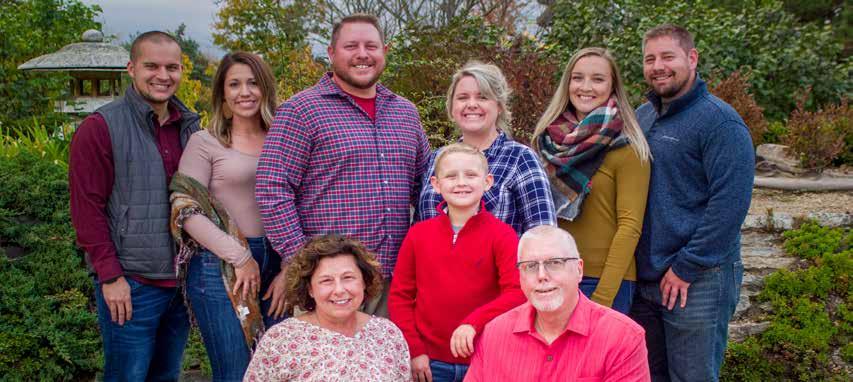
Whether you’re already on Medicare or not, we can help. Plus, our services and lifelong client support are always provided at no cost to you.
866.625.4609 | retiremed.com/tct
2 |
“RetireMed was so helpful and knowledgeable when it came time for us to enroll in Medicare.”
RetireMed clients Marge and Jeff Petry, and family, parishioners at St. Mary of the Assumption in Springboro.
Uniting Our Bodies to Christ
“What made you decide to convert to Catholicism?”
This is one of the main questions I’m asked when people find out I’m a convert, especially friends in Catholic circles. There are a lot of factors I can point to in response. I married a cradle Catholic who had a reversion to the faith. When I became pregnant with our first child, my husband and I agreed that we wanted to raise our kids with a united faith front. I had been going to Mass for years and felt connected to the Liturgy. I loved the Catholic faith’s beauty and traditions.
Even though those are all true and strongly influenced my conversion, it would not have happened without understanding the Real Presence in the Eucharist.

I grew up in a Methodist family. My mom took us to church, and I loved Sunday school and Vacation Bible School. We had Communion once a month, which I grew to understand was a representation of the Last Supper. And while I had a lot of questions about God as a child—most notably about the dinosaurs’ role in Christian history—it all, mostly, made sense.
However, when I began attending Catholic Mass as an adult, I was struck by the Eucharist being offered every single time. And not only that, it is the penultimate part of the Liturgy, with the most reverence and the most formal prayer. It is the great moment to which everything else builds. Why? Because Jesus’ body is made real within the host and wine; because Jesus is with us, and then His Body becomes part of
us. How amazing is that? It totally changed my perspective on the importance and necessity of church.
Right now, our archdiocese is participating in Bishop Barron’s “The Mass” study series, introduced each week by Archbishop Schnurr. In the very first episode, Archbishop Schnurr’s words reverberated loudly within my heart: “What does it mean to be Christian? It means to be in a relationship with Jesus Christ. And there is no encounter where that relationship becomes more fully alive than at the Mass.”
Through the Eucharist, we are able to unite our very bodies, weak as they are, to that of Christ’s. In this issue of the magazine, you’ll read stories of how the Eucharist transformed lives and how the faithful go above and beyond to bring Him in the Eucharist to those in need. May you find greater inspiration to receive the Body of Christ.
Archbishop Dennis M. Schnurr
Galloway
Rinaudo
GRAPHIC
Cassani
Hartman
Swensen
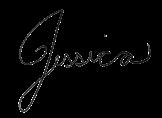
| 3
EDITOR’S NOTE T HE CATHOLIC TELEGRAPH 192nd Year No. 2 • February 2023 513-263-6635 • thecatholictelegraph.com 100 East Eighth St., Cincinnati, OH 45202 ctadvertising@catholicaoc.org The Catholic Telegraph (xUSPS 094-520) ISSN. 10736689 is published monthly by the Archdiocese of Cincinnati 100 E 8th St., Cincinnati, OH 45202. Periodicals postage paid at Cincinnati and at additional mailing office. POSTMASTER: Send address changes to: The Catholic Telegraph, 100 E. 8th St., Cincinnati, OH 45202
PUBLISHER
EDITORIAL DIRECTOR Jessica
DESIGN
Emma
ENGAGEMENT
NEW MEDIA
Greg
MEDIA SALES Deacon Graham
DIGITAL
Dominick Albano PHOTOGRAPHY Margaret
EDITOR
cteditorial@catholicaoc.org
Carrying Christ page 20
Forever
Remembering Pope Benedict XVI page 10
eucharist columns
8 EUCHARISTIC REVIVAL BRENDAN DILLON Medicine for the Weak
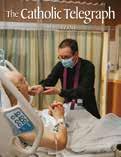

13 BOOK REVIEW
FATHER JACOB LINDLE
Becoming Eucharistic People
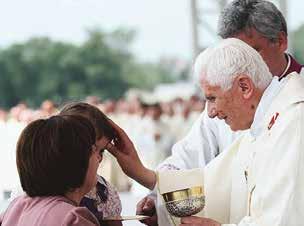
Written by Timothy P. O’Malley
14 PERSONIFYING THE SAINTS
KARY ELLEN BERGER
Relics at St. Margaret of York
7 QUESTION OF FAITH
FATHER DAVID ENDRES Faith’s absolutes?
24 A CLOSER LOOK
DR. KENNETH CRAYCRAFT
The Real Presence from Jerusalem to Emmaus (and back)
26 SHINE ON DOMINICK ALBANO What are you hungry for?
10 FOREVER REMEMBERING POPE
BENEDICT XVI
JENNIFER SCHACK
28 BOOKED WITH COMPASSION
MATT HESS
St. Christopher students donate books to floodravaged Kentucky schools
34 UNITED TO HEAL THE WORLD
ANDREW MUSGRAVE
Bread for the World unites faith leaders to take action against climate change
40 OUT & ABOUT IN THE ARCHDIOCESE
16 EUCHARIST + LENT SERIES
JOHN STEGEMAN
Basilica’s Lenten homily series to have Eucharistic flavor
18 EUCHARISTIC ADORATION
BONNY VAN
Bearing fruit in parishes
20 CARRYING CHRIST TO THE SICK
KARY ELLEN BERGER
Extraordinary Ministers of Holy Communion bring the Eucharist to the infirm
30 DID YOU KNOW? National Shrine of St. Anthony of Padua
32 SEIZE THE MOMENT NICHOLAS HARDESTY Does Jesus really satisfy?
36 KIDS’ CORNER
Venerable Marthe Robin
38 THEOLOGY OF THE BODY
DR. ANDREW SODERGREN Original Shame - part 1
42 THE FINAL WORD
FATHER JAN SCHMIDT
ON THE COVER
PHOTO BY: KATHERINE SWANSON
Father Ron Combs, Director of Hospital Ministries, brings the Eucharist to the sick at the hospital.
POPE FRANCIS’ PRAYER INTENTION FOR FEBRUARY
For parishes
Lent: Going back to God THE CATHOLIC
We pray that parishes, placing communion at the center, may increasingly become communities of faith, fraternity and welcome towards those most in need.
4 |
news
TELEGRAPH
february contents
Seek the Lord
DENNI S M. SCHNURR
On the eve of His passion and death, Jesus took ordinary bread and wine, blessed them, and gave them to His friends as His Body and Blood commanding, “Do this in memory of me.” The next day He offered Himself – Body, Blood, Soul and Divinity – to God the Father for our salvation. Jesus’ offering of Himself in the external form of bread and wine is the same offering He made to the Father on the Cross. The two actions are one single event: the center of salvation history.
The disciples took Jesus’ command to heart and carried out the same actions in His memory. From the earliest days of the Church, Christians have entered into the mystery of the Lord’s saving passion, death, resurrection and ascension each time the Eucharist is celebrated. The Church reminded us of the importance of sharing in the Eucharist at the Second Vatican Council, teaching that “all the faithful should be led to that full, conscious and active participation in liturgical celebrations which is demanded by the very nature of the liturgy” (Sacrosanctum Concilium, 14).
Such participation is not simply external. Pope Emeritus Benedict XVI said, “The active participation called for by the Council must be understood in more substantial terms, on the basis of a greater awareness of the mystery being celebrated and its relationship to daily life” (Sacramentum Caritatis, 52). He went on to state that the Council itself taught, “Offering the immaculate Victim, not only through the hands of the priest but also together with him, they should learn to make an offering of themselves” (Sacrosanctum Concilium, 48).
We often pray at Mass, “May he make of us an eternal offering to you” (Eucharistic Prayer III), asking that the Holy Spirit transform our lives into a sacrifice to the Father. We give
everything back to God: all we say, think and do; all for which we are grateful; all we suffer; in short, all that we are. We ask that our lives – through, with and in Christ – may be for the good of all the world.
When we spiritually place our lives on the altar and prayerfully unite ourselves to the offering of Jesus to His Father, our participation in Mass bears more fruit. The Word of God which He speaks to us through the readings has a greater effect on our lives, and the reception of our Lord in Holy Communion more deeply conforms our lives to His and to His Mystical Body, the Church. Our participation at Mass becomes a life-changing encounter with the Lord.
Pope Francis recently offered a beautiful reflection on the gift of such an encounter. “For us a vague memory of the Last Supper would do no good. We need to be present at that Supper, to be able to hear His voice, to eat His Body and to drink His Blood. We need Him. … The salvific power of the sacrifice of Jesus, His every word, His every gesture, glance and feeling reaches us through the celebration of the sacraments. I am Nicodemus, the Samaritan woman at the well, the man possessed by demons at Capernaum, the paralytic in the house of Peter, the sinful woman pardoned, the woman afflicted by hemorrhages, the daughter of Jairus, the blind man of Jericho, Zacchaeus, Lazarus, the thief and Peter both pardoned. The Lord Jesus who dies no more, who lives forever with the signs of His Passion continues to pardon us, to heal us, to save us with the power of the sacraments” (Desiderio Desideravi, 11).
May the Lord help each of us to enter more fully into this inexhaustible gift of the Eucharist every time we go to Mass!

| 5
SEEK THE LORD / FEBRUARY 2023
ARCHBISHOP
Busca al Senor
ARZOBISPO DENNIS M. SCHNURR
En la víspera de su pasión y muerte, Jesús tomó pan y vino ordinarios, los bendijo y se los dio a Sus amigos como su Cuerpo y Sangre ordenando: “Hagan esto en memoria mía”. Al día siguiente se ofreció a sí mismo – Cuerpo, Sangre, Alma y Divinidad – a Dios Padre por nuestra salvación. La ofrenda de Jesús de sí mismo en la forma externa de pan y vino es la misma ofrenda que hizo al Padre en la cruz. Las dos acciones son un solo evento: el centro de la historia de la salvación.
Los discípulos tomaron en serio el mandato de Jesús y realizaron las mismas acciones en su memoria. Desde los primeros días de la Iglesia, los cristianos han entrado en el misterio de la pasión, muerte, resurrección y ascensión salvífica del Señor cada vez que se celebra la Eucaristía. La Iglesia nos recordó en el Concilio Vaticano II la importancia de compartir la Eucaristía, enseñando que “se lleve a todos los fieles a aquella participación plena, consciente y activa en las celebraciones litúrgicas que exige la naturaleza de la Liturgia misma” (Sacrosanctum Concilium, 14).
Tal participación no es simplemente externa. El Papa emérito Benedicto XVI dijo: “la participación activa deseada por el Concilio se ha de comprender en términos más sustanciales, partiendo de una mayor toma de conciencia del misterio que se celebra y de su relación con la vida cotidiana” (Sacramentum Caritatis, 52). Prosigue aseverando que el mismo Concilio enseñó: “aprendan a ofrecerse a sí mismos al ofrecer la hostia inmaculada no sólo por manos del sacerdote, sino juntamente con él” (Sacrosanctum Concilium, 48).
A menudo rezamos en la Misa: “Que él nos transforme en ofrenda permanente” (Plegaria Eucarística III), pidiendo que el Espíritu Santo transforme nuestras vidas en un
sacrificio para el Padre. Le devolvemos todo a Dios: todo lo que decimos, pensamos y hacemos; todo por lo cual estamos agradecidos; todo lo que sufrimos; en definitiva, todo lo que somos. Pedimos que nuestra vida – por, con y en Cristo – sea para el bien de todo el mundo.
Cuando espiritualmente ponemos nuestra vida en el altar y en oración nos unimos a la ofrenda de Jesús a su Padre, nuestra participación en la Misa da más frutos. La Palabra de Dios que nos habla a través de las lecturas tiene mayor efecto en nuestra vida, y la recepción de nuestro Señor en la Sagrada Comunión conforma más profundamente nuestra vida a la Suya y a Su Cuerpo Místico, la Iglesia. Nuestra participación en la Misa se convierte en una vida en permanente cambio en el encuentro con el Señor.
El Papa Francisco ofreció recientemente una hermosa reflexión sobre el don de tal encuentro. “No nos sirve un vago recuerdo de la última Cena, necesitamos estar presentes en aquella Cena, poder escuchar su voz, comer su Cuerpo y beber su Sangre: le necesitamos a Él. … El poder salvífico del sacrificio de Jesús, de cada una de Sus palabras, de cada uno de Sus gestos, mirada, sentimiento, nos alcanza en la celebración de los Sacramentos. Yo soy Nicodemo y la Samaritana, el endemoniado de Cafarnaún y el paralítico en casa de Pedro, la pecadora perdonada y la hemorroisa, la hija de Jairo y el ciego de Jericó, Zaqueo y Lázaro; el ladrón y Pedro, perdonados. El Señor Jesús que inmolado, ya no vuelve a morir; y sacrificado, vive para siempre, continúa perdonándonos, curándonos y salvándonos con el poder de los Sacramentos” (Desiderio Desideravi, 11).
¡Que el Señor nos ayude a cada uno de nosotros a entrar más plenamente en este don inagotable de la Eucaristía cada vez que vayamos a Misa!
6 |
THE CATHOLIC TELEGRAPH
QUESTION OF FAITH
Faith’s Absolutes?
There were many absolutes in the Catholic Church’s teachings, but now it seems like there is much more flexibility and even changes to things we believed. What happened?

It is not unusual to hear, often through the media, that Church teachings have been altered. Such reports are usually overstated, though teachings and practices can develop as the Church strives to be a more faithful witness to the revelation of Christ. When they occur, these “changes” are frequently a form of development wherein the teaching is not fundamentally changed, but certain aspects are clarified or emphasized.
A SECURE TRADITION
The Church is a living, dynamic reality; It seeks in every age to be Christ’s presence in the world. Its witness entails faithfully teaching and living the truths of revelation. In part, fidelity to this divine truth is accomplished through adherence to the Church’s magisterium—its teaching office—which is the authentic interpreter of Scripture and tradition; its teachings are based on timeless truths given by God.
The Church proposes dogmas, which are those beliefs that are part of God’s revealed truth and that all the faithful must hold. The Catechism of the Catholic Church calls these teachings “lights along the path of faith” that “illuminate it and make it secure” (§89). Because they are derived from divine revelation, dogmas cannot change. Other teachings, however, can develop over time.
DEVELOPMENT OF TEACHING
Unchanging dogmas harmonize with the Church’s understanding of its teaching being living and dynamic—an understanding that dates to the early Church. The Church’s teachings, and our knowledge regarding those teachings, can evolve, which is understood as a growth in understanding rather than a change in teaching.
The Catechism explains that through the Holy Spirit’s
assistance, “the understanding of both the realities and the words of the heritage of faith is able to grow in the life of the Church” as well as within individuals (§94). Over time, the Church members can grow in understanding through study and contemplation, which deepens knowledge of revealed truth.
St. Vincent of Lerins in the 5th century suggested how this occurs, cautioning: “It must truly be development of the faith, not alteration of the faith.” According to his understanding, teaching can expand but does not change from one thing to another (Commonitorium, 23).
While the Church’s understanding can develop, church disciplines—which are often confused for teachings—can change, even significantly. Examples include the time required to abstain from food before receiving Communion (changed to one hour) and abstinence from meat on Fridays (now mandated only during Lent). By their nature, disciplines are subject to future change.
TO SAFEGUARD A RELATIONSHIP
The Church’s teachings are important, but there is a risk of reducing the life of faith to simply a set of propositions that must be held. A life of faith is primarily a relationship with God, which is guided by the Church.
With changes in religious education, catechesis and preaching, especially since the 1960s, there has been less emphasis on the absolutes of faith, but the Church’s foundational beliefs remain. Revelation has not changed; since it is from God, it cannot be altered. The challenge in every age is to take the truths that God communicates, live them out faithfully, and teach others to do the same.
FATHER DAVID ENDRES is professor of Church history and historical theology at Mount St. Mary’s Seminary & School of Theology.

| 7
QUESTION OF FAITH / FEBRUARY 2023
Medicine for the Weak
BY BRENDAN DILLON
Though I never strayed too far from my faith, I began to take it more seriously in college and explore my childhood faith as an adult. This renewal led to exciting changes: I transferred to a new school, made new friends, and got involved with retreats and other faith-based programs.
As with many converting to a new religion or finding their faith again, I wanted to follow the rules. Rules give structure. Rules set boundaries. Rules help you to know the right choices to make. I quickly moved, however, from a healthy acknowledgment of the rules to scrupulosity—an excessive concern for these rules, affecting how I approached and lived my faith, including reception of the Eucharist.
Because the Eucharist is the “source and summit” of Christian faith, it is natural that the sacrament is surrounded by teachings and guidelines. A point of stress for me was concern that I would fall into a “state of sin” instead of retaining a “state of grace.” Was I receiving the Eucharist in a state of sin and thereby committing another sin?
This one concern led to others. When
did I last go to Confession? Was I even sorry enough then? Have I since cursed excessively? Mistreated a family member? Used the Lord’s name in vain? Worshiped a golden calf? Sold government secrets? Committed racketeering (I don’t even know what that is…)? The list went on.

And how about receiving the Eucharist itself? At a house Mass once, I accidentally dropped a piece of the Eucharist on the ground. After Mass ended, my parents’ friend picked up the fragment and placed it in his mouth. I admired his example, but to avoid repeating the situation, I tried to envelop the entire wafer in my mouth, nearly unhinging my jaw like a python, afraid to lose any particles of the Host. Needless to say, the Eucharist provided more stress than peace.
A friend once shared that, as a kid, she expressed her faith in the Real Presence by whispering to her mom after receiving Communion, “I got a piece of Jesus’ foot,” or, “Got an elbow this time.” I found this habit amusing; her mom did not. While a little disconcerting, if we are honest, we have to appreciate that my friend was on to something, right? The Eucharist is Jesus.

8 | EUCHARISTIC REVIVAL
Brendan currently works at a non-profit in Dayton. He holds degrees in biology and theology from the University of Dayton and is pursuing a degree in Creative and Professional Writing from St. Joseph’s University in Philadelphia, PA.
THE CATHOLIC TELEGRAPH Eucharistic Fact! The Institution of the Eucharist is contained in the four Gospels: • Matthew 26:26-30 • Mark 14:22-26 • Luke 22:14-20 • John 6:22-59 (The Bread of Life Discourse)
Honor St. Joseph, the patron saint of workers, with your gift to support extraordinary caregiving for children and adults with complex disabilities at St. Joseph Home.


Gradually, this reality dawned on my medieval, self-flagellating, little soul. While sacred, the Eucharist is not a divine trap, poised to spring on the unworthy. “It” is a Person. A Person who did not condemn a woman caught in adultery. A Person who invited Himself to a tax collector’s house without asking him to change. A Person who forgave His own murderers while they were in the very act of killing Him.

A priest once told me that the Eucharist is about a relationship. This relationship cannot be earned, but is freely given, just as Christ gave of Himself in all His interactions with all kinds of flawed individuals. As Pope Francis said, “The Eucharist … is not a prize for the perfect but a powerful medicine and nourishment for the weak” (Evangelii Gaudium, 47).
During Mass, I now try to focus on God and listen. I try to receive the Eucharist reverently, but without stressing about losing transubstantiated atoms (I figure Christ has forgiven worse). I also no longer excessively comb through my sins; doing so obsessively focuses attention on me more than on God, which leads to an inverted narcissism. I will never be perfect, but that is no more of an impediment to my relationship with Christ than it was to His Biblical contemporaries. As St. Thérèse of Lisieux said, “Our faults cannot hurt God. Nor will our failures interfere with our own holiness” for “genuine holiness is precisely a matter of enduring our own imperfections patiently.”
As we journey towards holiness, let us not obsess on our personal holiness— or lack thereof—but on the Person we meet each week in the Eucharist.

One of the nation’s premiere sellers of used, rare & vintage books. Estates and collections of Catholic and other vintage books wanted!

| 9 EUCHARISTIC REVIVAL / FEBRUARY 2023
www.stjosephhome.org/donate 10722 Wyscarver Rd. | Cincinnati, OH 45241 513-563-2520 | www.stjosephhome.org
FINE BOOKS LTD 24
KUBIK
Park Ave., Dayton, OH 937-294-0253 | mail@kubikbooks.com
WE BUY OLD CATHOLIC BOOKS!
Pope Benedict XVI forever remembering
BY JENNIFER SCHACK
The last words of Pope Emeritus Benedict XVI – “Lord, I love you” – are a wonderful culmination of his life of faith. They are fitting words for someone who wrote extensively on love, including the theological meaning of God’s divine love, and God’s love expressed through prayer and worship, and lived out in the Church. His intimacy with Jesus was apparent in both his human interactions and his articulated words in books, encyclical letters, Apostolic Exhortations and homilies.

Upon the death of Pope Emeritus Benedict XVI, on Dec. 31, 2022, there was an outpouring of prayers and affection from around the world. In the Archdiocese of Cincinnati, Archbishop Dennis M. Schnurr offered personal reflections on the late Pope, saying in part, “During my years as general secretary of the United States Conference of Catholic Bishops in the early 1990s, I would frequently travel to Rome, and oftentimes I would see then-Cardinal Ratzinger making his daily treks across St. Peter’s Square from his apartment to his office. He would mingle with the people in the square while garbed in a simple black cassock. There was no indication that he was a cardinal. Often, he was asked by groups to serve as its photographer. This he did willingly and with a generous smile. As far as the group members were concerned, they had just been assisted by one of the local priests–and Cardinal Ratzinger seemed content
Continued on page 12
 Photo: © Mazur/cbcew.org.uk | edited
Photo: © Mazur/cbcew.org.uk | edited
1962-1965

April 16 - Born Joseph Ratzinger in Marktl am Inn, Bavaria, Germany, and baptized the same day
Enters minor seminary in Traunstein
Studies philosophy and theology at the Higher School of Philosophy and Theology of Freising and the Herzogliches Georgianum, a theological institute associated with the University of Munich.
By law, is required to enter the “Hitler Youth” at age 14 and then gets drafted into the German army at age 16. Deserts the army in 1945 with his brother Georg to rejoin the seminary.
Ordained a priest for Diocese of Munich
Earns doctorate in theology from University of Munich
Qualifies for university teaching and writes his dissertation on The Theology of History in St. Bonaventure.
Participates in Second Vatican Council as a theological adviser
Named archbishop of Munich and Freising
Named to the College of Cardinals
Named head of the Vatican Congregation for the Doctrine of the Faith
Serves as president of the Preparatory Commission for the Catechism of the Catholic Church
Elevated by Pope John Paul II to the Order of Bishops within the College of Cardinals, assigning to him the suburbicarian (titulary) see of Velletri-Segni.
Pope John Paul II approves of the election of Cardinal Ratzinger as the Vice Dean of the College of Cardinals
Pope John Paul II approves of the election of Cardinal Ratzinger as the Dean of the College of Cardinals and gives him the title of Cardinal-Bishop of Ostia
Elected pope, chooses the name Pope Benedict XVI
Apostolic Visit to the United States
Resigns from the papacy, the first such resignation in almost six hundred years
December 31 - date of death. Pope Benedict passed away in his residence at the Mater Ecclesiae Monastery in the Vatican Gardens
Timeline courtesy of USCCB
1927 1939
1941 1951 1953 1957 1977 1981 1986-1992 1993 1998 2002 2005 2008 2013 2022
1946-1951
| 11
QUICK FACTS about the Pope
Personal Motto
Cooperatores veritatis (Cooperators of the truth)
Quote from the Pope on Happiness
“If we allow the love of Christ to change our heart, then we can change the world. This is the secret of authentic happiness.” (Apostolic Journey to Mexico and the Republic of Cuba, March 2012)
Three Encyclicals
Caritas in Veritate
Spe Salvi
Deus Caritas Est
Charity & Truth
Christian Hope
Christian Love
June 29, 2009
Nov 30, 2007
Dec 25, 2005
to leave them with that understanding. I often wonder today if any of those tourists know their photographer moved on to become Pope Benedict XVI.”
Archbishop Schnurr also recognized the grandeur and grace of the esteemed leader, “Pope Benedict is widely known as one of the greatest theologians of the 20th Century, but this distinction should not overshadow his genuine personal interactions and humble nature. Those of us who interacted with him can attest to his ready sense of humor and consistently kind nature.”
But one doesn’t need to have met Pope Benedict XVI to be greatly impacted by him. Aside from those with personal stories of interaction, many others have come to know Pope Benedict through his prolific writings. Father Jacob Lindle, Parochial Vicar of the NE-1 Family of Parishes, was ordained to the priesthood in 2022. He credits Pope Benedict XVI for guidance in his vocation.
“His book, Introduction to Christianity, changed my life as a young freshman in college, and I have been reading his works ever since. When we read books, we win friends whom we might never meet on earth. When I read Benedict XVI, I not only gained a friend, but a spiritual father whom I hope to meet in Eternity.”
Date of Birth
Apr 16, 1927
Date of Death
Dec 31, 2022

Pontificate
Apr 19, 2003 -
Feb 28, 2013
Country of Origin
Bavaria, Germany
Bishop Earl Fernandes, of the Diocese of Columbus, was formed in his faith under the direct leadership of then-Cardinal Ratzinger, “As a teenager and college student, I began to read and study [Ratzinger] thoroughly, along with Hans urs von Balthasar and Henri de Lubac. His writings deepened my love for the Church, and when I left medical school, I went to a house of spiritual discernment in Rome, the Casa Balthasar. Then-Cardinal Ratzinger was our Cardinal Protector. He was scholarly yet gentle, like someone’s grandfather, who was unfailingly kind yet knew absolutely everything–a true wisdom figure.”
Following the death of Pope Emeritus Benedict XVI, Archbishop Schnurr celebrated a Mass at the Cathedral Basilica of St. Peter in Chains for the peaceful repose of the soul of Pope Benedict XVI. Additionally, many parishes in the archdiocese also celebrated Masses in the Pope’s honor.
While Pope Benedict was lying in state in St. Peter’s Basilica in Rome, the day before his Jan. 5 funeral, the Holy Father, Pope Francis, made the following remarks: “I would like … to turn my thoughts to [Pope Benedict XVI], a great master of catechesis. His acute and gentle thought was not self-referential, but ecclesial, because he always wanted to accompany us in the encounter with Jesus. Jesus, Crucified and Risen, the Living One and the Lord, was the destination to which Pope Benedict led us, taking us by the hand. May he help us rediscover in Christ the joy of believing and the hope of living.”
THE CATHOLIC TELEGRAPH
12 |
I’m usually allergic to titles like “Becoming Eucharistic People.” While the title is beautiful, as with a nice spring flower, I have an instinctual adverse reaction against it. Why? Because I’ve often seen such titles on shelves headlining handfuls of dust. What in the world does the adjective “Eucharistic” even mean with respect to people?
Happily, my cover-judgment was both rash and entirely wrong. This book is not mystically abstract, but relentlessly, and even uncomfortably, concrete: it is an extended refusal to let the doctrine of the Eucharist remain separate from any facet of our existence—the flesh and blood of our personal lives and communities. Becoming Eucharistic People is one long meditation on the consequences of the God who tabernacled among us in the Incarnation and who continues to set up His tent with us in the Eucharist.
So back to my initial reservation: what does the adjective Eucharistic mean with respect to people? Well, as the people who pattern their lives on Christ are called Christian, so too can the people who pattern their lives on the Eucharist be called Eucharistic. God, who is love, revealed Himself totally in the person of Jesus Christ. Jesus revealed God most radically in His passion, death and resurrection. And before Jesus was handed over to be crucified, He handed Himself over in the Eucharist. The creation-saving, death-defeating love which He revealed to the world on Good Friday and Easter Sunday was made always-accessible to us on Holy Thursday. Our whole lives, and indeed the whole world, are to be patterned on and formed into this love, which Love Himself patterned for us in the Eucharist.
In this book, Professor Timothy O’Malley walks his reader through this process of formation into love, from context to

BOOK REVIEW
Becoming Eucharistic People
vision to practical steps. O’Malley begins by recognizing the context of our polarized, wounded and disaffiliated society, then casts his vision by describing the shape and contours of a Eucharistic culture of communion. With this goal for a culture in mind, he guides the reader through a method of self-examination and discernment about how to accomplish the what and the why. He has two chapters addressing Eucharistic formation “inside the walls”: we must cultivate authentic Eucharistic reverence where we are “joyfully serious” in our worship of the living God; and we must foster an integrated and lifelong catechesis which unites memory, understanding and desire. After refuting any myth of a privatized Catholicism, O’Malley moves “outside the walls,” seeking the restoration of a Eucharistic popular Catholicism that unites liturgy and devotion and the cultivation of a Eucharistic solidarity that unites Catholic Social Teaching and the Eucharist. O’Malley does not leave one crack or crevice of the cosmos unformed by the Eucharistic self-giving love of Jesus.
The underlines and margin notations in my copy of this short book are nearly out of control. So much more can be said about Becoming Eucharistic People, but I don’t want to read it for you. If you really want a Eucharistic revival in this country, in this archdiocese, in your parish and in your life, you could start by reading this book and inviting a neighbor in your parish to do the same.
Father Jacob Lindle is a priest of the Archdiocese of Cincinnati. He is currently assigned as the parochial vicar for the NE-1 Family of Parishes in the northern part of the archdiocese.
| 13
Becoming Eucharistic People by Timothy P. O’Malley; Ave Maria Press. 160 pages. May 2022. $14.95.
REVIEWED BY FATHER JACOB LINDLE
EUCHARIST / FEBRUARY 2023
b y Timothy P. O’Malley
personifying THE SAINTS
BY KARY ELLEN BERGER
LOOK IN A MIRROR—DO YOU SEE A SAINT? SAINTS LIVE AMONG US AND THIS IS TAUGHT FIRST-HAND AT ST. MARGARET OF YORK IN LOVELAND.
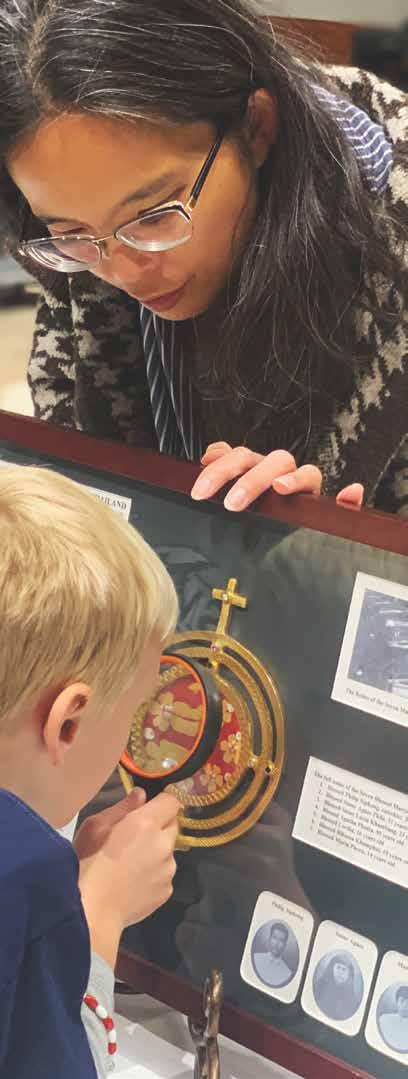
For a second year, students could venerate relics loaned from Our Lady of the Holy Spirit Center. In 2021, the school first received relics for veneration. The seven relics displayed in 2022 were from Saints Francis of Assisi, Anthony of Padua, Ignatius of Loyola, Dymphna, Mary Magdalene, Kateri Tekakwitha and the Seven Blessed Martyrs of Thailand.

“Students used magnifying glasses to examine the relics more closely and brought sacramentals to touch the relics,” said Hacker. “They waited quietly until it was their turn to venerate the relics. Students also brought written prayer intentions,” seeking the saints’ intercession.
“With this as their second year experiencing the relics, the students looked forward to attending this event,” said Kristin Penley, St. Margaret of York Principal. “It is a very moving, prayerful experience for all students, from youngest to oldest. Students are very reverent and sincere in their prayers as they spend time with the relics. They are encouraged to bring their rosary or a personal religious item from home to venerate the relics. They had the opportunity to ask questions about the relics and were able to share stories about how the saints speak to them in their daily lives.”
Penley said that as the viewing ended, students could look in a mirror to reflect on how they can also be saint-like.“Saintly relics personify the saints to our children,” said Penley. “Students are able to connect with [their] stories and experiences. This experience provides evidence to the children that these saints walked the earth just as [the children] do today. Our hope is
that these saints will act as role models to the children, [who] will remember them during challenging times. In their classrooms, they learn the stories about saints of all nationalities and origins. This experience brings those stories to life.”
Both Penley and Hacker shared that viewing of the relics was not only for children, and impacted adults. Children’s parents were invited in the afternoon and evening.


The parish was also gifted seven relics in 2021 that are always displayed for veneration: Saints Pius X, Anthony of Padua, Maria Goretti, Frances Xavier Cabrini, Margaret Mary Alacoque, Paul of the Cross and Blessed Maria Gabriella.

“We partner with parents in the faith formation of their children,” shared Penley. “Exposing the students to some of the many ways to pray in a respectful, devotional way builds a strong foundation for their faith.”
“As we live each day, we have times of joy and times of trial,” continued Penley. “When we are comfortable in our prayer life, we naturally lean into our faith in thanksgiving or despair. If taught at a young age, it becomes a way of life. These experiences with the Eucharist and the relics bring us close to God.”



| 15 REGISTER NOW! CincinnatiRighttoLife.org APRIL 15, 2023
EUCHARIST / FEBRUARY 2023 513-769-0511 | THEGLENSL.COM | POST-ACUTE HEALTHCARE SERVICES ASSISTED LIVING | AND MORE
Basilica’s Lenten homily series to have Eucharistic flavor
BY JOHN STEGEMAN
Area Catholics interested in developing a deeper understanding of the Eucharist will have a unique opportunity to do so this Lent, at the Cathedral Basilica of St. Peter in Chains in downtown Cincinnati.
A guest cleric will deliver a homily during a 7 p.m. vespers service every Friday of Lent (after the Stations of the Cross at 6 p.m.). This is the first year the basilica is doing a guest homily series. Because the United States Conference of Catholic Bishops is promoting a National Eucharistic Revival, Basilica Rector Father Jan Schmidt chose the Eucharist as the homilies’ focus.
“The homilies will focus on the Eucharist in the context of what the Lenten readings provide in the background,” Father Schmidt said. “My hope is that this will continue into the future, although each year will be a different focus.”

The first vespers homily is on Feb 24 and titled, “What does the New Testament say about the Eucharist?” It will be given by Father Kevin Scalf, chaplain and faculty member at McNicholas High School. Bishop Earl K. Fernandes of the Diocese of Columbus returns to Cincinnati for the March 24 vespers with a homily titled, “Towards a Eucharistic Culture: Characteristics of Evangelizing and Eucharistic Communities.”
The other homilists are Father Chris Geiger, Father Ryan Ruiz, Father Dan Hess and Father Ethan Moore. Fathers Geiger, Ruiz and Hess are on Mount St. Mary’s Seminary & School of Theology faculty, and Father Moore is pastor of the three-parish Uptown Catholic region near the University of Cincinnati.
“They are experts in preaching. I’m excited because they are all young, energetic, attractive to the people, and interesting and thought-provoking to listen to,” Father Schmidt said. “We wanted folks who would be able to focus us on [the Eucharist]. They’re theologians with training in specific areas; sacramental theologians, systematic theologians; folks that know Who the Eucharist is and can help us to better understand Christ’s presence in it.”
The archdiocesan cathedral became a basilica in 2020, due in part to its significance to the diocese and the worthiness of the art within it. Father Schmidt believes the homilies’ content is reason enough to plan a Lenten visit to the basilica, but he offered a special invite to those who have not visited before.
“This is the mother church of the archdiocese,” Father Schmidt said. “All are welcome. We hope those who are parishioners of the archdiocese would come visit and see [its] beauty[, …] grandeur and peacefulness at some point in their lives. [The Lenten homilies offer] a really great opportunity to do that.”
Basilica’s Lenten Homily Series
Date Homilist
February 24
March 3
March 10
March 17
March 24
March 31
Father Kevin Scalf
Father Chris Geiger
Father Ryan Ruiz
Father Ethan Moore
Bishop Earl K. Fernandes
Father Dan Hess
16 | THE CATHOLIC TELEGRAPH
{ eucharist
series
lent } +
I am the Bread of Life
Sung Lenten Evening Prayer and Reflections on the Holy Eucharist

Six Friday Evenings in Lent at 7:00 p.m.

Music sung by the Cathedral Basilica Choir | Lot & street parking available | Security provided Cathedral Basilica of St. Peter in Chains
8th & Plum Streets, downtown Cincinnati
Please consider making a gift to help support our Cathedral Basilica
Please specify how you would like to direct your tax deductible donation.
Lenten Evening Prayer & Reflection Series

Friends of the Cathedral Basilica
Archbishop Karl J. Alter Society (Gifts of $1,000 or more)
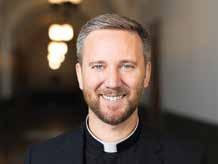

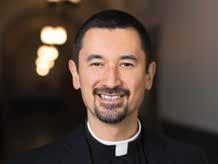
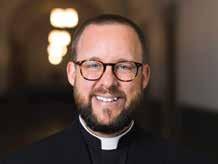
Donate by credit card online at cathedralaoc.org
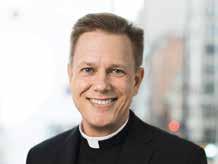
| 17
February 24: Fr. Kevin Scalf, C.PP.S. Meal, Memory, Meaning
March 3: Fr. Chris Geiger The Desire of the Heart Of Christ
March 10: Fr. Ryan Ruiz The Way of Union in the Eucharist: Entering into Ecstasy
March 17: Fr. Ethan Moore Falling Under the Cross: A Deep Dive into the Grace of Getting Back Up
March 24: Bishop Earl Fernandes Toward a Eucharistic Culture: Characteristics of Evangelizing and Eucharistic Communities
March 31: Fr. Dan Hess The Nourishing and Healing Power of the Eucharist
Address Phone Email Payment by personal check amount: $ Make check payable to: Cathedral Basilica of St. Peter in Chains Mailing address: Cathedral Basilica of St. Peter in Chains, 325 W. 8th Street, Cincinnati, OH 45202
Name
Bearing Fruit in Parishes }
Eucharistic Adoration
 BY BONNY VAN
BY BONNY VAN
Across the Archdiocese of Cincinnati, guardians and adorers walk among us. These dedicated Catholics don’t stand out in a crowd. They are retirees, employees, community leaders, business owners, grandparents, parents, sons and daughters—and they have one thing in common: A commitment to spend at least one hour a week with Jesus in adoration.
In 1981, just a few years after becoming pope, Pope St. John Paul II started Perpetual Eucharistic Adoration at the Vatican. Over the next decade, Catholic churches picked up the practice. In 1990, Father Angelo Caserta, pastor at St. Boniface Church in Piqua, OH, established St. Clare Chapel as a perpetual adoration chapel in a renovated storeroom under the church.
“The chapel is so special to me, it’s just a place of love, healing and joy,” said Ann Epperly, great-niece of Father Caserta. “Through the chapel, God has brought me so many wonderful people in my life. We just encourage each other on our faith journey. It’s a place of beauty.”
Now, Ann and her husband, Mike, are instrumental in keeping the chapel going. When she became a coordinator, Ann enlisted Mike, a retired teacher and new parishioner at St. Boniface, to substitute for open hours. He proposed to her in the St. Clare
Chapel in August of 2020, and the two married Dec. 19, 2020. Mike still subs when needed, and he and Mary Jane Karn are currently the coordinators for adoration hours.
“Before I moved to Piqua in 2017, I was going through a family situation and I lived nine miles away in another city, Sidney. I didn’t even know about the chapel, and then friends of the family told me about it,” said Mike. “It’s just a chance to get away from the noise and the garbage of the world.”
A handful of original Eucharistic Guardians, people committed to an hour or more each week to be with Jesus, remain dedicated to their time in St. Clare Chapel. The COVID-19 lockdowns forced St. Clare Chapel to close, but when the world slowly opened up again, the chapel followed suit, Mike said. Initially open from 10 a.m. to 4 p.m. daily, hours were gradually added. St. Clare Chapel is now open 150 of the 168 hours in a week.
The adoration chapel at St. Maximilian Kolbe Church in Liberty Township also dates back to the 1990s, when a few parishioners felt called to perpetual adoration. After a trial of two nights a week in the rectory’s basement chapel (there was no church at the time), the adoration program expanded. Its home also expanded when a new church was built in 2001
18 | THE CATHOLIC TELEGRAPH
{
that included an Adoration Chapel accessible from both inside and outside the church.
Kathy Hinger, Debbie Krzmarzick and Debby Kellner are members of the adoration team at St. Max. They have heard many times what a gift the chapel has been because access to it is now 24/7.
“We have had relatives of deceased members who can’t attend overseas funerals grateful to be able to come to the chapel late at night and pray while services are going on in different time zones. We have heard comments from non-Catholics praising the fact that there is a church open where you can always pray. Additionally, we have heard how family members praying in adoration have brought fallen away Catholics back to the faith,” they said.
As pastor at St. Gertrude Church in Cincinnati, Father André-Joseph, O.P. started 40 hours of adoration during Lent in 2014, with the goal of perpetual adoration. Parishioners Kevin and Anne Lynch were called upon to build the Mother of Mercy Adoration Chapel next to the church parish center, while parishioner Mary Pung was instrumental in coordinating sign-ups. The chapel opened its doors in June 2014 and maintained a steady flow of adorers until the pandemic.
Today, the chapel is open from 7:30 a.m. to 9 p.m. with overnight hours on Wednesdays. The testimonies of the gifts received from being in the presence of the Blessed Sacrament are endless, including conversions to the Catholic faith, stronger prayer lives and healing from past hurts, anxiety and brokenness.
“When I first entered the adoration chapel, I knew it was consecrated ground that held a peace like no other,” stated one Eucharistic Guardian from Mother of Mercy Adoration Chapel.



For those new to adoration, Ann Epperly suggests spending part of your time in silence, asking for direction.
“When it’s placed on your heart to even go into the chapel, if you’re even thinking, ‘Oh gosh, I’m kind of curious about this,’ the Holy Spirit is placing something on your heart and I think you should pursue it, and go and check it out. And give yourself an uninterrupted 10 or 15 minutes. Go in and see what it’s about. Just sit in front of that monstrance and you will leave changed,” she said.
St. Maximilian Kolbe, Liberty Township
Immaculate Heart of Mary, Anderson Township
St. Boniface, Piqua
Carrying Christ to the Sick
Extraordinary Ministers of Holy Communion Bring the Eucharist to the Infirm
BY KARY ELLEN BERGER
s one of the seven sacraments, the Eucharist is a holy encounter central to our spiritual lives. While most Catholics receive this sacrament during the Mass, earthly saints bring the Eucharist from Mass to those who otherwise would not receive it.
Throughout our archdiocese, countless individuals bring the Eucharist to others, including the following four people who give their time and talents to spread this mission.

FATHER RON COMBS
“A chaplain sacrifices [himself] for the good of those in need.”
The Archdiocese’s Director of Health and Hospital Ministries, Father Ron Combs, administers sacraments to patients at the University of Cincinnati Medical Center and Good Samaritan Hospital. After working in parishes for the first 18 years of his priesthood, he feels humbled to be called to hospital ministry.
“In parish ministry, I had a number of people over the years express their belief

20 | THE CATHOLIC TELEGRAPH
in my gifts for hospital and nursing home ministry, bereavement and the like,” said Father Combs. “I’m grateful for those gifts with which God has blessed me. I am humbled that people allow me to enter the tender moments of their life. And to be able to offer the Bread of Life—the blessed Presence of Jesus in the Eucharist— is not the work of me, but the work of God.”
KEITH HUTCHISON
“I saw it as another way to serve my St. Luke parish community.”
Keith Hutchison and his wife, Paula, have been members of St. Luke in Beavercreek since 1986; Keith converted to Catholicism in 1999. Throughout the years, he has volunteered in many parish roles, including as a booster member, Parish Council member, an usher and Eucharistic Minister.
“Distributing the blessed Eucharist to the sick and homebound is a great way to serve your parish community,” said Keith. “Taking the blessed Eucharist to the sick and homebound provides a way to share communion, community and conversation [with] those that are not able to attend Mass. They really look forward to the Eucharistic minister’s visits.”
to residents of Briarwood Village Nursing Home, then organized dozens of volunteers to bring the Liturgy of the Word with Holy Communion to the nursing home residents.
“I have no doubt that the Holy Spirit guided this ministry and the people who volunteered, given the long list of people who helped to create this ministry,” said Kaiser. “The people in this area have good hearts, are very giving, and the response to the call was just overwhelming. Many people assist in bringing Jesus’ Word and Body to Briarwood’s residents and I truly feel privileged to be a part of it.”
Kaiser added, “Bringing the Eucharist and His Word to the residents of Briarwood and getting to know them is very rewarding. I believe that there is no greater call, no greater work, no greater duty, no greater opportunity, no greater privilege than to reach out to the people who have no other way of receiving the Eucharist, to carry our Lord’s Body to them and offer Him to them, to His whole Church.”
CLARE THIELEN
“Our desire to bring the Eucharist to those who cannot attend Mass is an extension of our ministry.”
Parishioners of Holy Angels in Dayton, Clare Thielen, her husband, George, and their three daughters, Natalie, Rachel and Sarah, don’t hesitate to show their devotion to the faith. The family is involved with many ministries at Holy Angels, including as Extraordinary Ministers of Holy Communion; an extra special mission for the Thielens because Clare and George are able to support their mothers through this ministry.
He feels called to this ministry as part of his service to honor the Lord. “Being a Eucharistic Minister is a simple, easy and rewarding way to serve your parish community, be it at Mass or taking communion to the sick and homebound.”

ROGER KAISER
“I see Jesus in the people of Briarwood not just because of their suffering but because of their gifts: goodness, faith, trust, patience, kindness, strength, courage and love.”
A member of Holy Trinity Parish in Coldwater, Roger Kaiser is enrolled in the Permanent Diaconate Formation Program at Mount St. Mary’s Seminary & School of Theology and was previously in the Lay Ministry Program. The diaconate program requires participants to assist—and later create—a ministry within the community. Kaiser assisted with bringing the Eucharist
“There have been times the past few years where our mothers could not attend Mass for health reasons,” said Clare. “We wanted to bring them the Eucharist and to pray with them so they could remain connected to this important gift of our faith. This started prior to COVID, but during COVID when our churches were closed, it was very difficult to be away from each other and the Eucharist. This reinforced for us how important it is to bring Communion to those not able to attend Mass.”
The Thielens see this ministry as a privilege—one they deeply respect. “This ministry is a true blessing,” said Clare. “We are in the home of someone who is missing Mass due to health reasons, and [we] understand how much they would like to be at Mass in person. They are so appreciative of our ministry. and my husband and I have discussed feeling Christ’s presence when praying and reflecting both before and after someone receives the Eucharist.”
| 21 EUCHARIST / FEBRUARY 2023
“A chaplain sacrifices [himself] for the good of those in need. ”
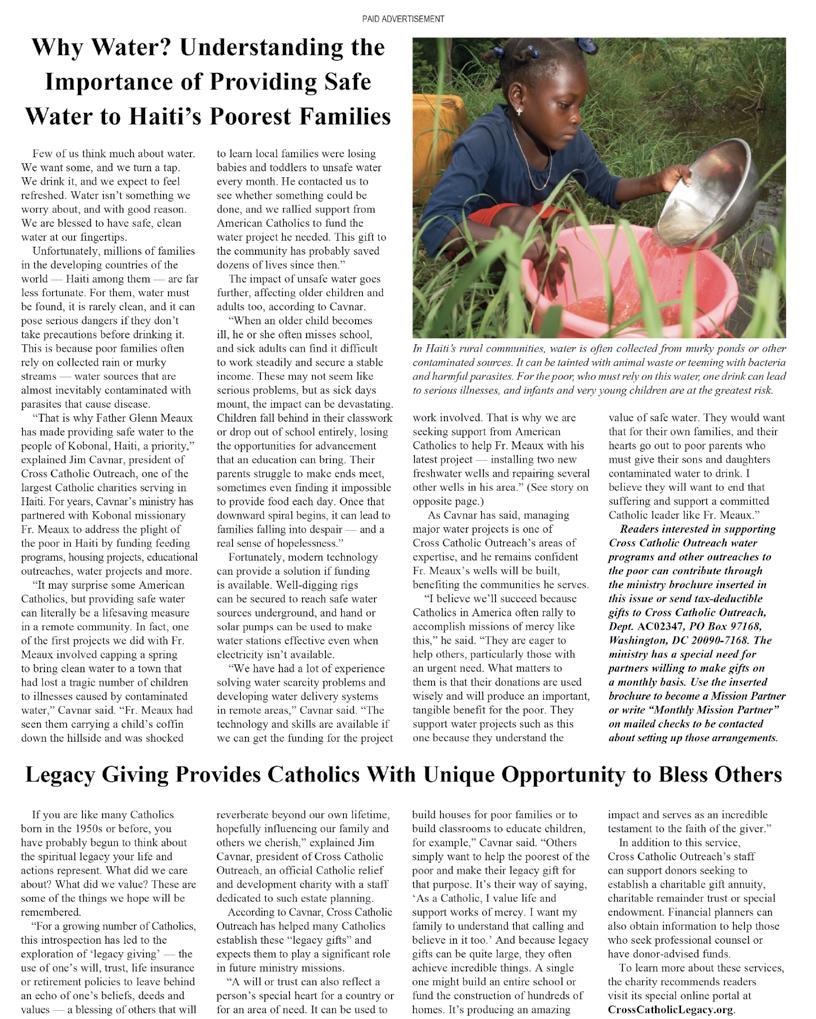
22 |
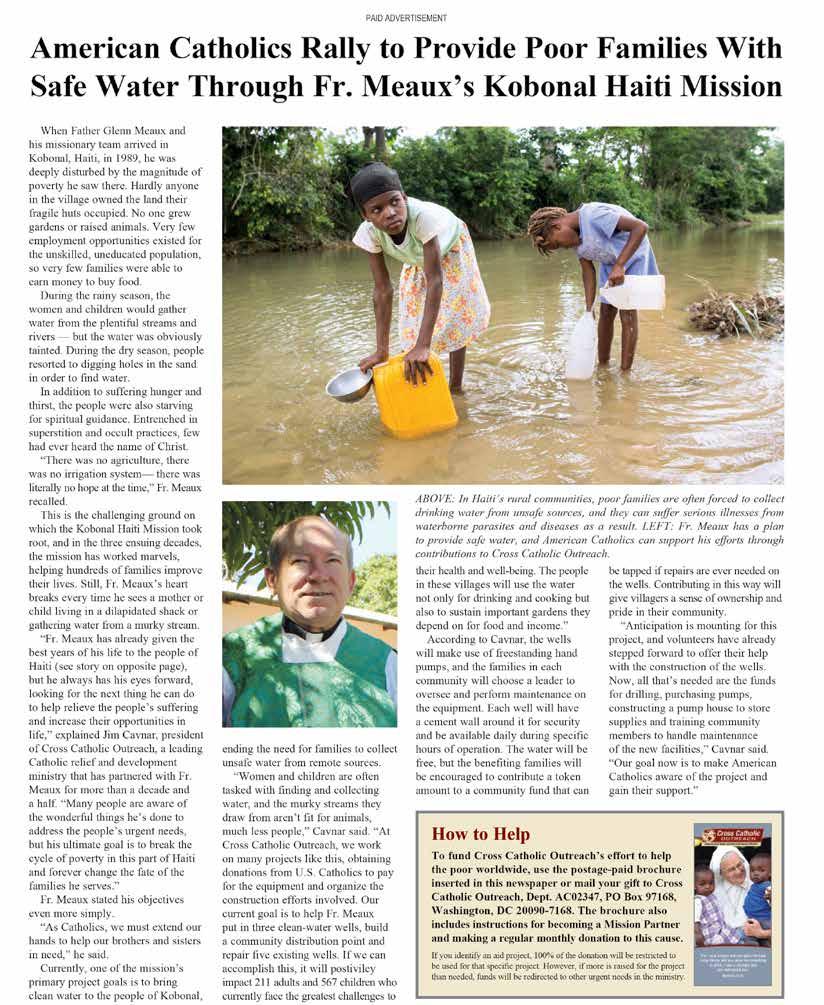
| 23
The Real Presence from Jerusalem to Emmaus (and Back)
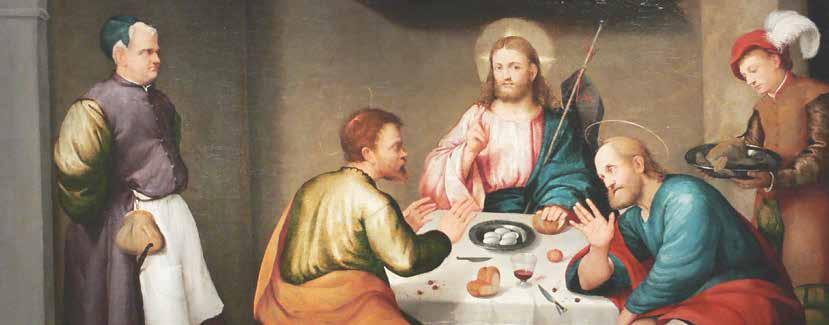
Among Catholics, an emphasis on one true aspect of Communion often leads to the denigration (if not effective denial) of another true aspect of Communion. Some Catholics emphasize the Real Presence of Christ on the altar at the words of consecration, but ignore the Eucharist’s community-forming nature. Others emphasize Communion’s community-forming nature, but downplay (or even deny) the Real Presence of Christ in the Host. A closer look at a less obvious Gospel account of the Eucharist illustrates how both aspects should be embraced and celebrated, and why we should resist this “either/or” error.
Catholics are familiar with the words of consecration in the Liturgy of the Eucharist during Mass: “Take this, all of you, and eat of it: for this is my body which will be given up for you.” These words are taken from the Gospel accounts of Jesus’ institution of the Eucharist on Holy Thursday, the night before his crucifixion, “on the night he was betrayed” (Eucharistic Prayer III). While the center of our Eucharistic liturgical celebration, this prayer is not the New Testament’s only Eucharistic reference. In the Gospel of Luke, another Eucharistic event helps flesh out our understanding of both the Real Presence and the celebration’s community-forming nature.
In Luke 24, after the crucifixion two disciples returned from Jerusalem to their home in the nearby town of Emmaus. Jesus met them along the road and asked what they were discussing, but was not recognized by the disciples. They explained their disappointment of the previous days’ events, when their hoped-for Messiah was executed by the Roman authorities, mass confusion followed and His body disappeared. “We were hoping that he would be the one to redeem Israel,” one of them bemoaned. As they walked together Jesus explained
that these events were prophesied in the Hebrew Bible, and it was necessary for them to occur.
They reached Emmaus and Jesus began to move on, but the disciples urged Him to stay at their house. When they sat down to eat, something unexpected happened. Rather than the hosts offering a blessing for the food and feeding their guest, Jesus himself “took bread, said the blessing, broke it, and gave it to” the disciples. In other words, the disciples provided the gift of bread, but it was Jesus who gave thanks and fed His followers with the blessed food. And it was not only (or even primarily) physical nourishment they received from the meal, but spiritual sustenance. “Their eyes were opened and they recognized” Jesus as their Messiah, explains the evangelist. In other words, Jesus’ presence became real to them when He blessed, broke, and fed the bread to them. And at the very moment of recognition, Jesus “vanished from their sight.”
Amazed by what they experienced, the Emmaus disciples immediately set out for Jerusalem to tell Jesus’ other followers what happened. They went to the remaining 11 apostles and “recounted how [Jesus] was made known to them in the breaking of the bread” (emphasis added). Even as the Emmaus disciples were recounting their experience, Jesus “stood in their midst and said to them, ‘Peace be with you.’” Jesus appeared to the community of believers at the very moment the disciples were explaining that He had appeared to them in the breaking of the bread. While we celebrate Pentecost as the “birthday of the Church,” we clearly see her embryonic form in this gathering of believers around Christ in their midst.
The parallels to the events at Mass are not accidental. We
24 | THE CATHOLIC TELEGRAPH
A CLOSER LOOK
bring the bread to the altar in our local parish (our house), where we offer it to our Lord. The priest, in persona Christi, gives thanks, blesses the bread, and feeds us who brought it. In the breaking of the bread, we recognize Jesus, really present and really known. And in His Real Presence on the altar, Christ gathers the community around Himself. Finally, after the consecration and Lord’s Prayer, the priest (again, in persona Christi) says, “Peace be with you,” just as Jesus said to the community of disciples in Jerusalem after the pair returned from Emmaus.
We rightly associate the Liturgy of the Eucharist with the Last Supper on Holy Thursday. But the Emmaus story deepens and enriches our understanding of the Eucharist, illustrating both the Real Presence of Christ and the communal nature of the liturgy. We must not succumb to an “either/or” mentality. The Church teaches that the Eucharist is both the real presence of Christ on the altar and the formation of the community we call the Church. A journey to Emmaus and back reminds us of both these important truths.

Catholic Charities Southwestern Ohio serves and empowers people through God’s love in their times of vulnerability. We do so through a full range of local services that engage the community in building solidarity. Serving more than 15,000 people each year, we provide food assistance, senior and caregiver support, mental health counseling, family and parenting education, comprehensive services for migrant and refugee families, and much more. Our mission is enabled by all those who generously pray, learn, volunteer and donate. Interested in volunteering or having us pray for you? Visit www. ccswoh.org!
Interested in supporting our programs? DONATE securely online at ccswoh.org or mail in your donation.



| 25 A CLOSER LOOK / FEBRUARY 2023
Enclosed is my gift of: £$25 £$50 £$100 £$250 £$500 £
Name E-Mail Phone Address City State Zip
LOCAL FAMILIES. EMPOWERING
make checks payable to: Catholic Charities Southwestern Ohio, Mid Pointe Tower, 7162 Reading Rd., Ste. 600, Cincinnati, OH 45237
DR. KENNETH CRAYCRAFT is an attorney and the James J. Gardner Family Chair of Moral Theology at Mount St. Mary’s Seminary & School of Theology.
$__________
SERVING
LOCAL LIVES. Please
Serve | Engage | Empower CT_HalfPage_Feb_FINAL 22_356.indd 1 1/4/23 9:56 AM
What Are You Hungry For?
Imagine for a moment that you are Satan. You’re the master deceiver, the father of lies, diabolical, and you’re fully set on stealing as many souls from God as possible.
How would you do it? I’m sure we could imagine a thousand different ideas, but let me propose one strategy we can witness at play in today’s world. First, let’s consider how the Church has grown and spread throughout history. A primary mode of growth for Christianity has been through acts of love and service. This should be no surprise as it’s the model Jesus established.
In the Gospels, we see that Jesus almost always addresses a human need before addressing a spiritual need. He heals and drives out demons, then He preaches the beatitudes. He feeds thousands, then He gives the Bread of Life discourse. He stops a crowd from stoning an adulteress to death, then tells her to go and sin no more. He calms the storm, then challenges His disciples to have greater faith.
Through a similar model, the Church has grown throughout history. Faithful disciples cared for the poor and lowly. Missionaries traveled to new lands where they built hospitals and schools. Immigrants found welcome and family in small faith communities. And while addressing these human needs, the disciples preached the Good News of Jesus Christ. Wherever you find Christianity spreading, you find missionary disciples clothing the naked, feeding the hungry, caring for the sick, teaching the ignorant, visiting the imprisoned and sheltering the homeless.
So, what diabolical plan would stop Christianity’s spread in its tracks? Build a world where nobody needs anything.
Of course, I am painting with broad strokes, but many in our communities don’t want for life’s necessities. Maybe we can’t afford that Corvette we’ve always dreamed of, but most of us have food, clothing and shelter. We have access to education. We can show up at a hospital and someone will care for us. We
have seemingly limitless access to entertainment and comfort right at our fingertips. It’s a truly diabolical plan. It leaves many people asking, “Why would I ever need Church?” And that question is only a short step from, “Why would I ever need God?”
The Eucharist is God’s gift of Himself for our salvation, but notice how Jesus spoke about the Eucharist in Scripture. He told people that if only they would eat this bread, they’d never be hungry again! If only they would drink this wine they’d never be thirsty again. These were people who experienced hunger and thirst in a way most of us never have, and likely never will! Today, Jesus’ promise often falls on deaf ears: I’m never hungry anyways, so why do I need your Living Bread?
If you ever struggled with your belief in the Eucharist or your personal relationship with the Eucharist, try this: Allow yourself to go hungry and see how that changes things for you. You can focus on fasting for one hour before Mass, but you could also try other ways to make yourself “hungry.”
• Try eating or drinking nothing but water from bedtime on Saturday night until after Mass on Sunday morning.
• Try giving a little more financially than you normally do—a 1% increase is a good place to start.
• Try setting the thermostat two degrees colder.
• Make one small sacrifice every day, like drinking one less cup of coffee, eating the salad instead of the cheeseburger, or foregoing the radio while driving in the car.

Our modern culture feels like we don’t really need anything— including God. It’s a diabolical plan. And so, it might just be that the best way to grow closer to the Eucharist is to remember what it feels like to hunger.
DOMINICK
ALBANO
is The Catholic Telegraph’s director of digital engagement, an author and national speaker. He and his wife have been married for 15 years and have four sons. dalbano@catholicaoc.org

26 | THE CATHOLIC TELEGRAPH
SHINE ON










Help your kids discover the adventure of their faith. CYSCGreatLakesWeek1 (June11th-16th):HighSchool CYSCMainCampusWeek9 (August6th-11th):MiddleSchool REGISTERHERE! REGISTERFORSUMMER2023ATCYSC.COM! OpenWeeks: Aweek-longresidentialcampfor students enteringgrades6-12 Chooseanyofour three locationsfor alife-changingexperienceofhigh adventurefaith!
booked with
COMPASSION
St. Christopher Students Donate Books to Flood-Ravaged Kentuky Schools

 BY MATT HESS
BY MATT HESS
All too often we hear of tragedies in the world, but are at a loss as to how we can help—especially when events happen in other states or halfway across the globe. Being part of the Church both grants us access to a helpful network and calls us to reach out to others, to be Christ to them.
When many Kentucky communities flooded this past summer, pictures circulated on the news of people digging their homes and businesses out of the mud. In Whitesburg, the seat of Letcher County, KY, water flooded to nine feet in the high school. Families who would have been preparing for a new school year shared that many schools and their contents, including books, were damaged or destroyed.
Students at St. Christopher School in Vandalia, OH, responded this past fall by sharing the love of Christ with those students in flood-ravaged Kentucky. Interestingly, the invitation to help came from a Lutheran Church in Wise, Virginia, Christ Lutheran Church. After seeing news coverage of the damage, their outreach committee, which includes many educators, met to discuss what they could do. They felt called to collect books for those school libraries in Letcher County needing replacement reading materials. They sent word to the local community, and Elizabeth Steele, the committee’s chairperson, mentioned it to her sister, Connie.
Previously on faculty at St. Christopher School, Connie reached out to
former colleagues for help from the school. Carrie Hartley, the librarian and a junior high teacher, took up the charge. During read-a-thon week in early November, St. Christopher School added a book drive for the students in eastern Kentucky, and the PTO offered a popsicle party for the class that collected the most books.
Meanwhile, teachers shared information and photos about the flooding in eastern Kentucky. One photo showed a person shoveling the muddy books they hoped to replace—an image that moved the students and spurred their generous response. “It was nice to have a concrete way to help,” said Hartley. “The students really appreciated … that.” For older students, it was a time to reflect on what they enjoyed reading when they were younger; some donated those specific titles so that others could enjoy the same stories.
St. Christopher’s 286 students in kindergarten through eighth grade raised 2,077 books, to which were added 56 boxes of books from Ohio. These were stored until Elizabeth could bring them to Wise, VA. With flood damage still being repaired, the books were kept in Whitestown’s bus facilities until they could be placed on shelves.
Struck by the reality that this was not just a Catholic or Lutheran endeavor, Elizabeth said this generosity “speaks well of humanity.” It was a human undertaking that transcended religious denominations and demonstrated that Christians are called to work together to help those in need, just as Christ encountered, loved and helped the people He met.
28 | THE CATHOLIC TELEGRAPH
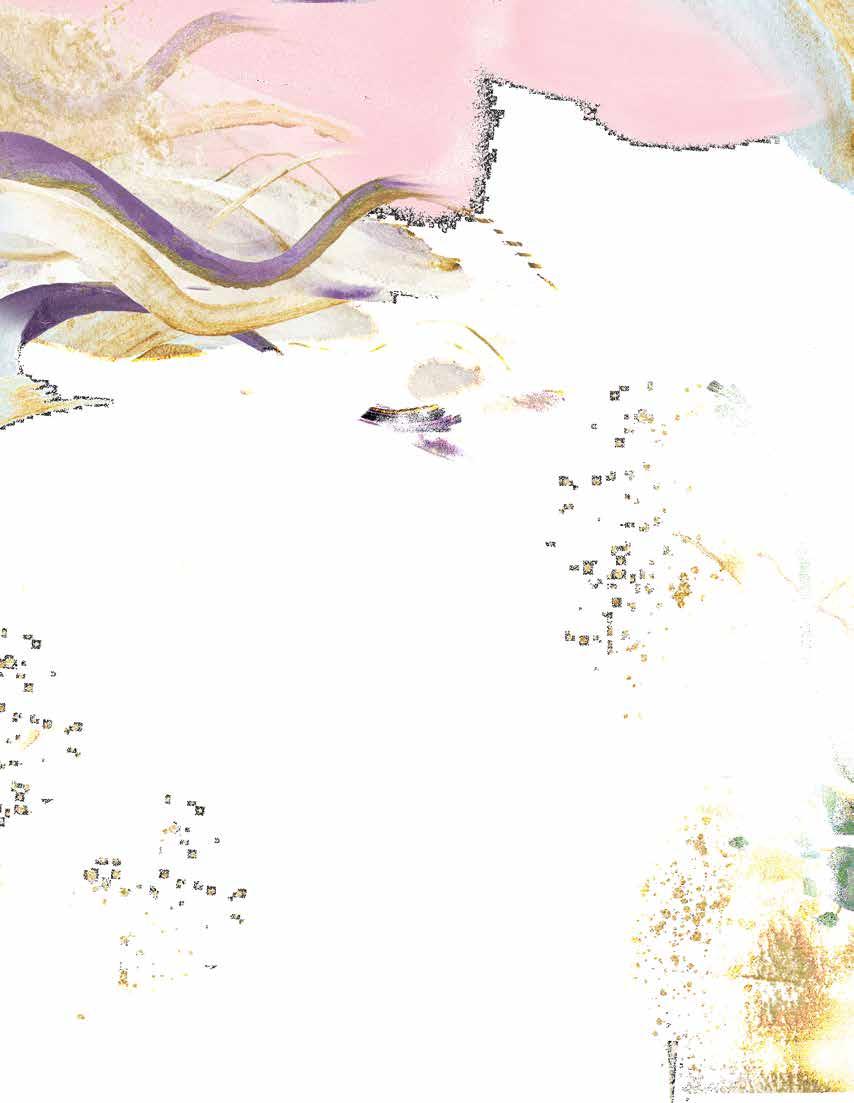
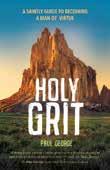
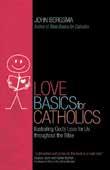
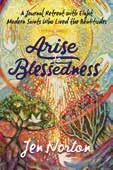
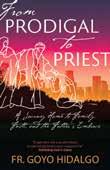
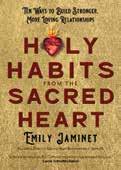

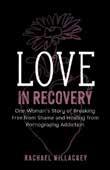
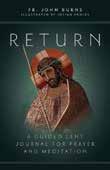

Holy Grit PAUL GEORGE 160 pages, $16.95 Love Basics for Catholics JOHN BERGSMA 160 pages, $16.95 Arise to Blessedness JEN NORTON 160 pages, $18.95 Return FR. JOHN BURNS 224 pages, $13.95 Love in Recovery RACHAEL KILLACKEY 192 pages, $17.95 From Prodigal to Priest FR. GOYO HIDALGO 128 pages, $14.95 Holy Habits from the Sacred Heart EMILY JAMINET 160 pages, $16.95 When Your Days Are Dark, God Is Still Good GARY ZIMAK 192 pages, $16.95 Look for these titles wherever books and eBooks are sold. For more information, visit avemariapress.com.
NEW Catholic Books
1880
Joseph and Elizabeth Nurre bought a country estate at the top of Mt. Airy and donated it to the Franciscan friars.
1888
Cornerstone laid, building constructed, friars moved in.
1889
Archbishop Elder consecrated the chapel on Thanksgiving Day. The large Romanesque brick chapel (which fronts the attached friary and novice house) originally had eight side altars and was lavishly decorated in German style with statues and paintings from Europe.

1890
First friars invested on the Feast of the Assumption.
1902
Mother (now Saint) Katherine Drexel visited to suggest the Franciscan Provincial send friars west to minister to Native Americans.
1978

Extensive chapel renovations transformed the chapel into a spare, airy space; eight wooden saint statues remain in niches to mark the side altars’ locations.
“People drop in here all day long to pray, and come by all day and all night to light candles in the outdoor shrine.” — Br. Vince Delorenzo, OFM
“Please kindly pray for me that God might intervene in my life. Pray that God might lift up my life to the topmost sky.” — Prayer streamed from overseas
The prayer website at the National Shrine of St. Anthony of Padua in Mt. Airy claims to receive more prayer requests than any website in the world, and it displays them in the chapel, where daily Mass is offered.
St. Anthony of Padua was born in 1195 and entered the Augustinian order at age 15. After the remains of Franciscans martyred in Morocco were brought to his monastery, he joined the Franciscans to follow their example. His own journey to Morocco ended in a shipwreck, followed by a life of travel and preaching, until St. Francis assigned St. Anthony to teach. Eventually, his preaching in Padua attracted crowds too large for any church. Today, he is often invoked to help find lost articles because of this story: When a novice stole his psalter and ran away, Father Anthony prayed for the psalter to be found or returned, and the novice came back to the order—with the psalter.
4 Banks of candles in the outdoor brick shrine (for St. Anthony, St. Francis, Our Lady of Guadalupe and Our Lady of Sorrows)
1 First-class relic of St. Anthony, kept in the chapel beneath a wooden statue of the saint
1 Video monitor shows a live feed of prayers to the saint coming in from around the world
1 Columnar, glass-fronted, wooden tabernacle displays an elaborately molded ciborium for Eucharistic adoration
36 Stained glass windows
1 Replica of the San Damiano cross hangs over the altar. Originally in the choir at the Duns Scotus College House of Philosophy chapel, it was moved to the shrine after the college closed in 1979.
St. Anthony is usually depicted with one or more of these symbols: a book for his scholarship, a lily for his purity, or the infant Christ for an event reported by a man who rushed into St. Anthony’s room, thinking it was on fire, and saw St. Anthony with the Christ child.

30 |
THE CATHOLIC TELEGRAPH
Does it matter where you bank?

At Christian Family Credit Union we believe it really does matter where you do your banking!
When you bank with us, your money is put to work building the Kingdom of God. While we offer all the banking options you need, the mission and values we embrace matter most.
Our Mission is to glorify God by caring for His people in a way that helps them become better financial stewards. Align your finances with your faith when you and your family bank with Christian Family Credit Union.

ChristianFamilyCU.com | (513) 528-1521
LEARN MORE!
Does Jesus Really Satisfy?
Jesus has some powerful things to say about the Eucharist in the sixth chapter of John’s Gospel: “The bread which I shall give for the life of the world is my flesh” (Jn. 6:51). “He who eats my flesh and drinks my blood has eternal life” (Jn. 6:54). “For my flesh is food indeed, and my blood is drink indeed” (Jn. 6:55).
These verses lay the foundation for our belief in the Eucharist. As monumental as they are, let’s examine what Jesus says earlier in this chapter: “I am the bread of life; he who comes to me shall not hunger, and he who believes in me shall never thirst” (Jn. 6:35).
A NEW KIND OF FOOD
We can easily miss this verse’s significance. It’s worth repeating: He who comes to Jesus will not be hungry. He who believes in Jesus will never be thirsty.
This is just as alarming as the “eat my flesh” bombshell! After all, Christians go hungry and thirsty every day. What is Jesus talking about here? There are at least four ways to understand this passage. Let’s call these the natural, sacramental, spiritual and eschatological interpretations.
A BREAD-TH OF MEANING
Regarding the passage’s natural sense, God provides for His children’s physical needs. As Scripture says: “Look at the birds of the air … your heavenly Father feeds them. Are you not of more value than they?” (Mt. 6:26). “Therefore, do not be anxious, saying, ‘What shall we eat?’ or ‘What shall we drink?’ … But seek first his kingdom and his righteousness, and all these things shall be yours as well” (Mt. 6:31, 33).
God will give us what we need—he does it all the time. It’s not always apparent; sometimes we don’t need what we think we need. But, our God is “Jehovah Jireh” (Gen. 22:14): The Lord will provide.
From a sacramental perspective, couldn’t this be a reference
to the Eucharist? We are in John 6 after all, building up to Jesus’ “hard sayings” on the Real Presence. So, when we read in Jn. 6:35 that coming to Jesus means never growing hungry or thirsty, we should see that He is introducing His intention to give us the Eucharist. He wants to feed and sustain us with it, both physically and spiritually. As often as we receive the Eucharist, we are satiated by Jesus.

This leads to the passage’s spiritual meaning: Our hunger and thirst aren’t always physical. The restlessness, the ache, the longing we feel—that’s a spiritual hunger. God put it there, deep in our hearts, so that He could fill it with His grace, His presence, His gifts and His Spirit. He assures us He will do this: “Blessed are those who hunger and thirst for righteousness, for they shall be satisfied” (Mt. 5:6).
ONE LAST WORD
Finally, there is the eschatological meaning, how the passage points to the end of time. In a sense, everyone who comes to Jesus still grows hungry and thirsty. That’s the way of this world: We get hungry, we eat, we’re satisfied for a while, and then we get hungry again.
It will always be this way… until Jesus comes again. On that day, everyone in righteous relationship with Jesus will receive a glorified body, one that will never again experience hunger, thirst, sickness, or suffering of any kind. That’s the promise of Jesus and His Gospel. But, we have to come to Jesus. Now. And we have to stay with Him.
So, I urge you: keep on asking, seeking and knocking. Keep on praying for your daily bread. Keep on receiving our Eucharistic Lord with a pure heart. Then, when Jesus comes, both in the Eucharist and at the end of time, His promise to satisfy will be fulfilled in you.
NICHOLAS HARDESTY is the associate director of Adult Evangelization and RCIA for the Center for the New Evangelization. | nhardesty@catholicaoc.org

32 | THE CATHOLIC TELEGRAPH
SEIZE THE MOMENT

UNITED TO heal the world
Bread for the World Unites Faith Leaders to Take Action Against Climate Change
 BY ANDREW MUSGRAVE
BY ANDREW MUSGRAVE


For many years the earth’s weather patterns have been shifting: stronger storms, prolonged droughts, intensifying heat waves, rising sea levels and more. Most of us in the Midwest are blessed to not be significantly affected, although we haven’t been immune—especially those involved in agriculture. Much of the world, however, has been profoundly impacted, especially in food production and distribution.

This past fall, Bread for the World, a U.S.-based nonprofit that has worked for over 50 years to end global hunger, united the voices of Christians in the U.S., Europe and Africa. The goal was to increase recognition of the climate change reality and plead for world leaders to come together to address its devastating effects on the lives of Earth’s most vulnerable people.
Through the end of summer and early fall, Christians from different corners of the world met virtually to draw on wisdom from both faith and scientific leaders in drafting a statement that recognizes our collective: 1) responsibility for much of the change, 2) lack of dedication to our faith’s commitment to charity for all and 3) choice to ignore the scientific evidence showing humanity’s impact on the severity of the change. I was blessed to be part of this conversation. Together we prayed for our repentance and committed to making changes in our lives, both collectively and as individuals.
We concluded the process by gathering for a week in Nairobi, Kenya, to finalize our statement and determine how we move beyond words to action and progress. We learned first-hand how climate change is affecting people in developing countries and how those countries are leading the charge to overcome the effects, including: 1) scientists utilizing specific trees and
crops to improve soil and food production; 2) nonprofits accessing improved cooking methods to feed children in schools; 3) women empowering each other in raising and selling chickens and by acting as entrepreneurs, growers and businesswomen. Signed by faith leaders from across the globe, our statement was presented at the United Nations annual conference to address climate change (COP27, held in November in Egypt).
The question for us is this: How are we—Catholics in the Archdiocese of Cincinnati—going to be a part of this work, this movement, to address climate change and heal our world? How are we going to stand in solidarity with our sisters and brothers locally and around the globe to care for all of God’s creation and ensure that everyone is fed?
An immediately available option is to join the work of our Archdiocesan Care for Creation Task Force (CCTF). For over 30 years, the CCTF has gathered Catholics from around the archdiocese to learn, assess, pray, act and advocate. For the last five years, it recognized select parishes, schools and Catholic institutions as Laudato Si’ Communities for their demonstrated commitment to caring for creation.
Perhaps most importantly, we can join the related global movement launched by the Vatican, Laudato Si’ Action Platform (see page 35). Worldwide, Catholics are working with scientific and community advocates, national and international leaders, and people from all faiths to address the existential threat of climate change and its widespread and long-lasting effects. All that we have is part of God’s creation, and we are called to love and protect our world for the people with us now—and for all those to come.
34 | THE CATHOLIC TELEGRAPH
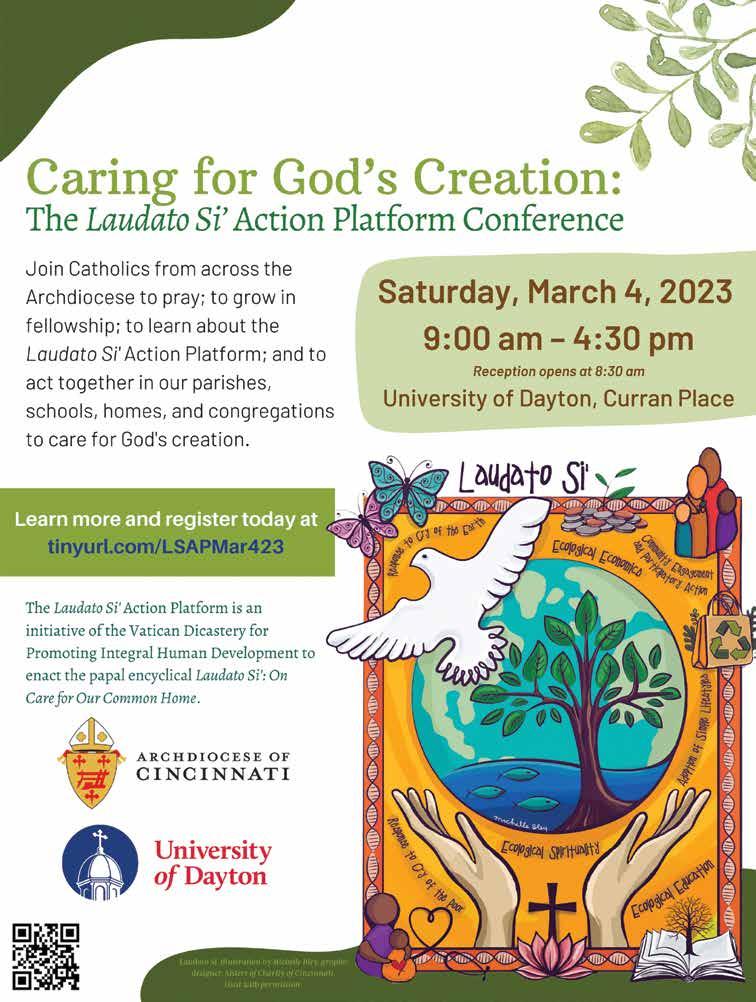
| 35 NEWS / FEBRUARY 2023
Born in France in 1902, Marthe left school at 13 to live with her sister, contribute to farm life and help raise her nieces and nephews. She collapsed when 16 due to illness, but three years later the Virgin Mary appeared to her, while her sister, Alice, witnessed miraculous light in the room.
Marthe’s disease grew worse, slowly paralyzing her, but amid her suffering, her faith grew. At age 21, after emerging from a three-week coma, she told her family she had seen St. Thérèse of Lisieux. From that time on, she was completely bedridden. In 1928, Marthe shared that Christ had appeared to her, which moved her spiritual life’s focus to the Passion and the Eucharist.
Rumors of her mystical experiences spread, drawing people to visit her—more than 100,000 during the 79


years of her illness. They reported that her loving heart made God present to them.



Although bedridden, Marthe initiated a girls’ school at Châteauneuf-de-Galaure and founded the first Foyer de Charité, with George Finet’s help. The Foyer organized five-day retreats that served 2,000 retreatants annually.
Over the course of her life, Marthe drew closer to God and journaled her experiences. Admitted to the Third Order of St. Francis in 1930, by the end of the year she began to relive Jesus’ Passion and received the Stigmata marks. Many witnesses attested that she ate nothing for years, receiving only the Holy Eucharist. She died in 1981 and was declared Venerable by Pope Francis on Nov. 7, 2014.

36 | THE CATHOLIC TELEGRAPH
thecatholictelegraph.com/ marthe-craft



Craft Video




thecatholictelegraph.com/ marthe-video
collapsed disease




france illness
journal marthe robin


mystical
pope francis
stigmata
virgin mary
| 37 KIDS’ CORNER / FEBRUARY 2023
“God never tires of loving and he can never get enough of being loved.”
Original Shame Part 1
As we have been exploring the nature and effects of original sin on humanity, it is now time to plunge into the reality of shame, with the help of Pope St. John Paul II. We could hope for no better guide. As a poet, pastor, philosopher and theologian, he reflected deeply on the experience of shame. In Theology of the Body alone, he used the term “shame” 136 times and another closely related term 33 times. He also wrote an extensive reflection on “the metaphysics of shame” in his prior book, Love and Responsibility. Let’s see what we can learn from his insights.
The pope took Genesis 3:9-10 as his starting point. “The Lord God called to the man and said to him, ‘Where are you?’ And he said, ‘I heard the sound of you in the garden, and I was afraid, because I was naked, and I hid myself.’ John Paul II saw our first parents’ new impulse to hide from God and from one another because of their perceived “nakedness” as evidence of the birth of shame in their hearts. He described this shame as a “boundary experience” because it demarcates original man and historical man, now affected by original sin (TOB 11:3ff).
It is important to clarify that original shame pertains not merely to physical nakedness. According to John Paul II, “‘Nakedness’ does not have only a literal meaning: it does not refer only to the body” (TOB 27:2). After all, God sees not only the body but also the depths of man’s heart. Indeed, our first parents were ashamed before God in part because they perceived the loss of harmony within them. They perceived their lack of full self-possession due to sin. Their interior life is now marked by disharmony and conflict.
Furthermore, because of original sin, the visible world is no longer docile to man’s authority but rebels against him. The forces of nature now threaten man, and his work to cultivate the world is marked by suffering and toil. The “resistance of nature against man and his tasks” gives rise to “cosmic shame,” which expresses a “sense of insecurity” and an “awareness of being defenseless” in a now hostile world. “The end of this toil, of this struggle of man with the earth, is death” (TOB 27:4).
Thus, our first parents experience shame over the loss of harmonious self-possession and mastery over nature. But why would they—or we—wish to hide from the God who is love, who created humanity out of nothing, and who bestows wondrous gifts? It is because they have become “alienated from the Love that was the source of the original gift” of creation, “the source of the fullness of good intended for the creature” (TOB 27.2).
Through the influence of the tempter, man doubted God’s goodness and doubted that Love is the ultimate meaning and motive behind creation. By believing the tempter’s words and acting upon them, man turned his back on our loving Father and “in some sense cast him from his heart,” cutting humanity off “from that which ‘comes from the Father’” and leaving only “what ‘comes from the world’” in its place (TOB 26:4). “Shame touches in that moment the deepest level and seems to shake the very foundation of their existence.” It gives rise to an urge to hide from God showing that “a sense of fear before God has matured: a fear previously unknown” (TOB 27:1).
This fear is entirely different from the “fear of the Lord” praised in Scripture. The latter refers to awe and wonder in the presence of the all-holy God. It is closely related to reverence and is an essential and wholesome spiritual attitude for all of us to cultivate. Conversely, the fear that flows from original shame stems from doubting God’s goodness. If God is not pure goodness, then how can we let Him “see” us? How can we trust Him enough to let Him come to us at our worst moments?

I invite all of us to reflect on the many ways we, like our first parents, hide from God because, just as we struggle to see His pure goodness, we struggle to believe that in the face of our brokenness and sin, He could possibly continue to see good in us.
DR. ANDREW SODERGREN, MTS, PSY.D. is a Catholic psychologist and director of psychological services for Ruah Woods. He speaks on the integration of psychology and the Catholic faith. He and his wife, Ellie, have five children.

38 |
THE CATHOLIC TELEGRAPH
POPE ST. JOHN PAUL II’S THEOLOGY OF THE BODY
Visit our Stations of the Cross!

The Stations of the Cross is a way to pray and meditate on Christ’s sacrifice for us. It is divided into fourteen stations from the time He was condemned to His burial. We encourage this devotion at Gate of Heaven Cemetery, especially during this season of Lent and Good Friday.

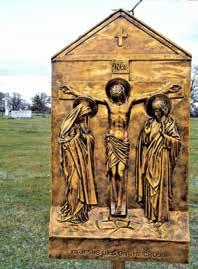
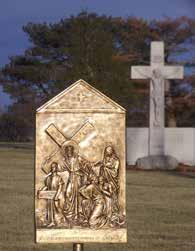
“O Jesus Christ, my Lord, with what great love you traveled the painful road which led to your death -- and how often have I abandoned you. But now I love you with my whole soul, and because I love you, I am sincerely sorry for having offended you. My Jesus, pardon me, and permit me to accompany you on this journey. You died for love of me, and it is my wish, O my dearest Redeemer, to be willing to die for love of you. O my beloved Jesus, in your love I wish to live, and in your love I wish to die. Amen.”
2023

Pre-Planning Seminars
11am, 2pm and 6pm dates: January 24, February 21, March 21, April 25, June 20, July 25, August 22, September 26, October 24, November 21
Please RSVP and call 513-489-0300 or email community@gateofheaven.org 513-489-0300
• GATEOFHEAVEN.ORG
in the Archdiocese out & about
2) Mary Statue Restored at The Summit

1) Students Explore Ursuline History
Saint Ursula Academy freshmen spent a class period in the Ursulines of Cincinnati Archives, where they learned about the women who were instrumental in founding the Academy and carrying on the legacy of academic excellence.

3) Layettes for Newborns in Need


1 2 3 4


The Christ Child Society of Dayton created blankets, booties, hats and outfits for newborns in need in the Dayton area through eight social service agencies. Led by Lucille Carroll, they assembled more than 1,500 layettes. The group’s co-presidents, Mary Ann Hemmert and Kathy Farrey, oversee the nonprofit Catholic association of volunteers who have many service projects and social opportunities and spiritual development.

A wooden statue of the Virgin Mary at The Summit Country Day School was restored to its original beauty thanks to campus chaplain, Reverend Phil Seher. Believed to be dated from the late 1800s, the statue had become worn over time; faded and chipped paint rendered some elements of the design unrecognizable. Father Seher discovered the sculpture and felt strongly that it was worth saving and restoring. The beautiful Mary now stands proudly in the Upper School office.
4) Socks for St. Vincent de Paul
Students from Saint Peter School in Huber Heights participated in Socktober, collecting 4,105 pairs of socks and donated them to the Society of St. Vincent de Paul

40 | THE CATHOLIC TELEGRAPH
Catholic Crossword
21 Charged particles
24 Some kids
25 ___ of milk and honey
26 Agenda notation

27 Hopper
28 Sound equipment
29 Papal letter signed by the Pope’s secretary and sealed with the Pope’s ring
31 Ales
32 Saint of Orleans

33 Bone that parallels the radius
34 Hayes of “The
FUNERAL SERVICES
T.P. White
Directors:
GERRY KELLY FRITSCH

Traditional Irish Bagpiper gfritsch48@zoomtown.com cincinnatipiper.com 513.404.0049
A Catholic familyowned funeral home since 1877 513.891.8373

A Catholic Family Owned Funeral Home –Since 1877 513-891-8373








513-469-9345
Family-owned & operated since 1912
| 41 FEBRUARY 2023 Subscriptions for the faithful of the Archdiocese of Cincinnati are FREE! To subscribe, visit our website, or call The Catholic Telegraph offices at 513-263-6635.
in the Archdiocese of Cincinnati
KLEB & IHLENDORF FUNERAL HOME
Montgomery Rd. |
Norwood,
Bernard
surrounding communities 513.385.0511 White Oak / Monfort Heights 5527 Cheviot Rd. Blue Ash / Evendale / Sharonville 10211 Plainfield Rd. 3183 Linwood Avenue • Mt. Lookout Square Serving Eastern Hills, Mt. Lookout & Hyde Park 321-0404 Four generationsoffamilyservice to Eastern Cincinnati. George H. 1910 John H. 1920 J.H.(Don) 1948 Steve 1975 Since 1910 rohdefuneral.com • 513.321.0404 3183 Linwood Ave. | Mt. Lookout Square
NAEGELE
3900
513.631.2240 Serving
St.
&
Steve Rohde, Denise Mercier, Darrell Schneider
generations of family service to Eastern Cincinnati 2050
Four
Beechmont Ave. | 513.231.7150 Family-owned & operated since 1870
&
2050
Mt Washington/Anderson Twp Family owned & operated since
Sons Funeral Home
Beechmont Ave • 513-231-7150
1870 8350 Cornell Road • Cincinnati (Across from Gate of Heaven Cemetery) info@weilkahnfuneralhome.com
1 2 3 4 5 6 7 8 9 10 11 12 13 14 15 16 17 8 9 1 1 20 21 22 23 24 25 26 27 28 29 30 31 32 33 34 35 36 37 38 39 40 41 42 43 44 45 46 47 48 49 50 51 52 53 4 5 5 5 56 57 58 59 60 61 62 com wordgamesforcatholics www
us to
them
of Isaac 10
14 Sewing case 15 Tusks 16 “Skedaddle!”
Retired 18 Leader of the Maccabees 20 The Council of Trent met in three 22 Daughter of Pat Boone and convert to Catholicism 23 MI neighbor 24 Super Bowl XLII champs 25 ___ of the Sacred Heart 29 City in the Archdiocese of Cologne 30 Tiny particles
Spoiled child
The feast of St. Ignatius of Loyola is the last day of this month
Semi-monthly tide
Bicuspids
Potpourri 39 Drs. For 37A
Guns the engine
Ethan Allen’s
became a
Lively, as in sailing
Catholicism is the official religion of this tiny country 44 Four door cars 47 Spread, as cards 48 Club rules 49 Snowstorm
Reception of Holy Orders
Cyberauction site
Litigious type
Christmas song
Prod 60 Agile
Warming drink
Colors DOWN
Galilee and others
“What’ll
Billiard implements
Young goats
selling of spiritual things
Decays
Catholic actor
century
ACROSS 1 The Works of Mercy require
visit
5 Mother
Org.
17
31
32
36
37
38
40
41
daughter who
nun 42
43
54
56
57
58
59
61
62
1
2
___?” 3
4
5 Buying or
6 ___-garde 7
8
Carney 9 16th
saint with a flowery name 10 Gray 11 Garment 12 Flies high 13 Prying 19 Conjunction
Squad”
toy
business
The
of
Days”
Stretch wide 43 Chiefly
Vermont specialty 45 Senior 46 Milk store
Biblical bad weather 48 Manager 49 Feathered creature 50 OT prophetic book
Ben Adhem”
Yard implement
Stains
Way” S I C K S A R A H A S S N E T U I I V O R Y S H O O A B E D M A T T A T H I A S S E S S I O N S C H E R R Y O N T G I A N T S L I T A N Y B O N N A T O M S B R A T J U L Y N E A P T E E T H O L I O D M D S R E V S F A N N Y Y A R E M O N A C O S E D A N S F A N B Y L A W S B L I Z Z A R D O R D I N A T I O N E B A Y S U E R C A R O L P O K E S P R Y T O D D Y H U E S moc scilohtacrofsemagdrow www
Mod
35 Spool-like
37 Conduct
41
___
“Happy
42
44
47
51 “___
52
53
55 Literally, “The
We Catholics are wild about signs and symbols. We make the Sign of the Cross whenever we pray, worship, enter the church, walk through a cemetery, or even step up to the plate at a baseball game. We wear symbols of our faith on our ears and around our necks; hang them on our walls and dangle them from our rear view mirrors. We take yearlong pride in the palms we carry home from church on Palm Sunday, and we are especially careful to get that little cruciform black smudge of ashes on our foreheads at Ash Wednesday Mass.
Those ashes are the mark of our repentance. This is the sign that we intend once again, during this 40-day season of Lent, to change our lives, give up the ways of the world, and get back on track to the Kingdom of God.
“You have all gone astray like sheep,” laments St. Peter in 1 Pet. 2:25, “Now return to the shepherd and guardian of your souls.”
Sin draws us in many directions, but they all lead to death. No matter what we gain in this world—money, power, possessions, pleasure, dominance, influence, comfort, security—it all ends sooner or later. There is nothing we can take with us beyond the grave. But it is through the grave that we enter eternal life and the Kingdom of God! Jesus Christ gave up everything in this world so that He might gain everything in the world to come.
“Repent, for the kingdom of heaven is at hand,” Jesus cries out in Matthew 4:17.
You have died with Christ “and were buried with him in
with Father Jan K. Schmidt
Lent: Going Back to God
baptism,” St. Paul writes in Col. 2:12, “and you were also raised with him through faith in the power of God, who raised him from the dead.” He continues in 3:1-4: “If you were raised with Christ, then seek what is above, where Christ is seated at the right hand of God … for you have died, and your life is hidden with Christ in God. When Christ your life appears, then you too will appear with him in glory.”
Look around, and you can easily see how far we’ve gotten away from a life with Christ in His death and burial. We are very much alive to the world and all it contains. We fill our homes, our bank accounts, and our bodies with all the passing things of the world that keep us from God’s Kingdom.
During Lent we turn and go the other way, back to God. We fast, we pray, we give our money to the poor. The mark of the ashes is an outward sign that signifies an inward reality. We believe in the cross of Jesus Christ. As He has shared in our humanity, so we are invited to share in His divinity. Our sins are forgiven.
We only need to join him in a communion of flesh and blood. He has offered us His. The question for these 40 days is: Will we offer Him ours?
FATHER JAN K. SCHMIDT
is a priest of the Archdiocese of Cincinnati and currently serves in the Archdiocesan Pastoral Center as the Director of the Department for Pastoral Vitality, and as both Dean of the South-A Deanery and Rector of the Cathedral Basilica of St. Peter in Chains in Cincinnati.

42 | THE CATHOLIC TELEGRAPH THE FINAL WORD
It’s not about what it is. It’s about Who it is.
Presence: The Mystery of the Eucharist explores the truth and beauty of Christ’s real presence in the Eucharist, from its origins in Sacred Scripture, to its profound role in the life of the Church and her members. It is the crescendo of the entire story of salvation.
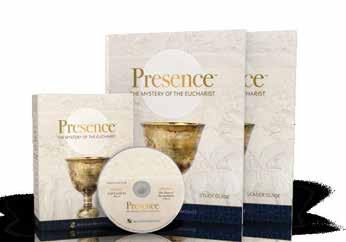

Learn more at AugustineInstitute.org/Presence

| 43


44 | 100 E. 8th St. • Cincinnati, OH 45202




















 Photo: © Mazur/cbcew.org.uk | edited
Photo: © Mazur/cbcew.org.uk | edited




















 BY BONNY VAN
BY BONNY VAN

























 BY MATT HESS
BY MATT HESS


















 BY ANDREW MUSGRAVE
BY ANDREW MUSGRAVE














































